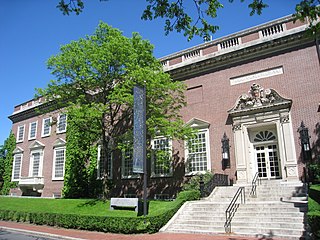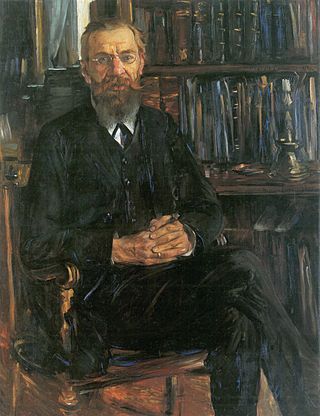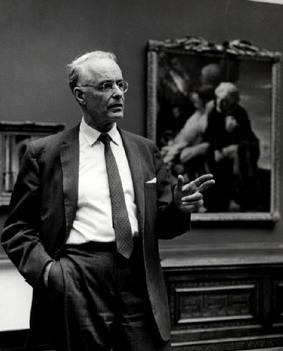
Hermann Julius Theodor Hettner, was a German literary historian and museum director.

Ernest Francisco Fenollosa was an American art historian of Japanese art, professor of philosophy and political economy at Tokyo Imperial University. An important educator during the modernization of Japan during the Meiji Era, Fenollosa was an enthusiastic Orientalist who did much to preserve traditional Japanese art.

Charles Kendall Adams was an American educator and historian. He served as the second president of Cornell University from 1885 until 1892, and as president of the University of Wisconsin from 1892 until 1901. At Cornell he established a new law school, built a library, and appointed eminent research professors for the Ivy League school. At Wisconsin, he negotiated ever-increasing appropriations from the state legislature, especially for new buildings such as the library. He was the editor-in-chief of Johnson's Universal Cyclopaedia (1892–1895), and of the successor Universal Cyclopaedia (1900), sometimes referred to as Appleton's Universal Cyclopaedia.

The Institute of Fine Arts (IFA) is a graduate school and research center of New York University dedicated to the study of the history of art, archaeology, and the conservation and technology of works of art. It offers Master of Arts and Doctor of Philosophy degrees in Art History and Archeology, the Advanced Certificate in Conservation of Works of Art, and the Certificate in Curatorial Studies.

George Edward Woodberry, Litt. D., LL. D. was an American literary critic and poet.

Kuno Meyer was a German scholar, distinguished in the field of Celtic philology and literature. His pro-German stance at the start of World War I in the United States was a source of controversy. His brother was the distinguished classical scholar, Eduard Meyer.

The Harvard Art Museums are part of Harvard University and comprise three museums: the Fogg Museum, the Busch-Reisinger Museum, and the Arthur M. Sackler Museum, and four research centers: the Archaeological Exploration of Sardis, the Center for the Technical Study of Modern Art, the Harvard Art Museums Archives, and the Straus Center for Conservation and Technical Studies. The three museums that constitute the Harvard Art Museums were initially integrated into a single institution under the name Harvard University Art Museums in 1983. The word "University" was dropped from the institutional name in 2008.

Eduard Meyer was a German historian. He was the brother of Celticist Kuno Meyer (1858–1919).
Jeffrey F. Hamburger is an American art historian specializing in medieval religious art and illuminated manuscripts. In 2000 he joined the faculty of Harvard University, where in 2008 he was appointed the Kuno Francke Professor of German Art and Culture. Hamburger received his B.A., M.A and Ph.D from Yale and has previously held professorships at Oberlin College and the University of Toronto. Elected a Fellow of the Medieval Academy in 2001, he has won numerous awards for his publications, among them: the Charles Rufus Morey Prize of the College Art Association (1999), the Roland H. Bainton Book Prize in Art & Music (1999), the Otto Gründler Prize of the International Congress on Medieval Studies (1999), the Jacques Barzun Prize in Cultural History of the American Philosophical Society (1998), the John Nicholas Brown Prize of the Medieval Academy of America (1994), and the Gustave O. Arlt Award in the Humanities of the American Council of Graduate Schools (1991). His research has been supported by fellowships from the Guggenheim Foundation, the American Philosophical Society, the Institute for Advanced Study, the National Endowment for the Humanities, the Center for Advanced Study in the Visual Arts, and the Alexander von Humboldt Foundation. In 2009 Hamburger was elected a member of the American Academy of Arts and Sciences and in 2010, of the American Philosophical Society. In 2015 he was awarded an Anneliese Maier Research Award by the Alexander von Humboldt Foundation. In 2022 he was awarded the Gutenberg Prize of the City of Mainz and the Internationale Gutenberg-Gesellschaft.
Charles Louis Kuhn II was an American art historian and curator. Kuhn was the Director of the Busch-Reisinger Museum at Harvard University from 1930 to 1968.

Joseph Leo Koerner is an American art historian and filmmaker. He is the Victor S. Thomas Professor of the History of Art and Architecture and Professor of Germanic Languages and Literatures at Harvard University. Since 2008 he has also been Senior Fellow at the Harvard's Society of Fellows.

Wolfgang Ferdinand Ernst Günther Stechow was a German American art historian.

Adolf Brütt was a German sculptor. He was the founder of the Weimarer Bildhauerschule and its accompanying bronze foundry.

Wilhelm Wackernagel was a German-Swiss philologist specializing in Germanic studies. He was the father of Indo-Europeanist Jacob Wackernagel.
Archer Taylor was one of America's "foremost specialists in American and European folklore", with a special interest in cultural history, literature, proverbs, riddles and bibliography.

Josef Neuwirth was an Austrian art historian and architect.
Wolfgang Victor Ruttkowski is a scholar of literature and culture. He has written four works of comparative literature and psychology of art, now considered standards of their genre. Born in 1935 in Silesia, he began his studies in 1961 at the University of Vienna studying theatre arts and at the University of Göttingen, mainly German and comparative literature under Wolfgang Kayser. After the latter's unexpected death, he received a DAAD-scholarship at McGill university in Montreal/Canada (1963–65). He obtained his PhD on the subject of cabaret ballads in Germany after which he was invited by Göttingen University for an oral examination, after which he also received the German Dr.Phil. The idea of this topic, formerly never dealt with in a scholarly fashion, came from his nightly performances in cabarets and nightclubs, where he sang German and French cabaret songs and American jazz standards.
Viktoria Schmidt-Linsenhoff was a German art historian and professor with particular research interest in the fields of gender studies and postcolonial studies.
Friedrich Kauffmann was a German philologist who specialized in Germanic studies.
Jens Christian Jensen was a German art historian and curator.













